Getting your teeth into Swiss meat prices
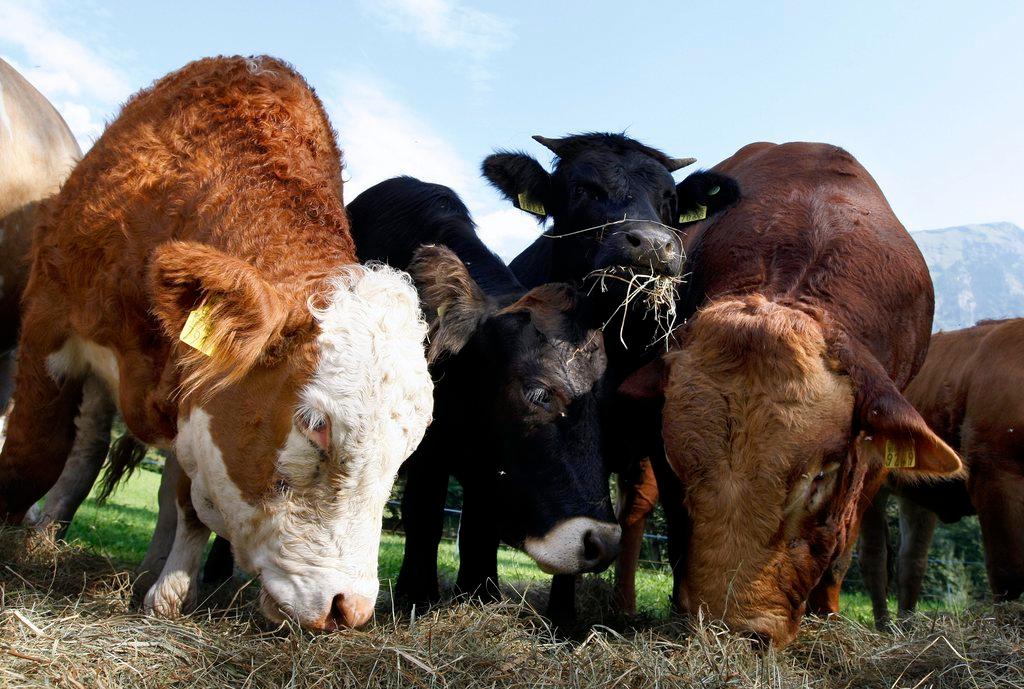
Why is Swiss meat among the most expensive in the world? Farmers, consumer groups and industry experts all have their opinions.
Not many people in the world can afford to pay nearly $50 for a kilogramme of beef leg round or more than $20 for the same amount of pork chop. But those are the price tags on these cuts of meat in Swiss supermarkets. According to the Meat Price Index 2017 by CaterwingsExternal link, Switzerland has the highest meat prices in the world – 142% more than the global average.
Caterwings estimates that an unskilled Swiss worker needs only 3.1 hours to afford 1kg of beef, while in India someone must work 22.8 hours to pay for the same amount. The extremely high cost of living in Switzerland goes some way towards explaining the high prices, yet Switzerland still lags behind many other western European countries in the index’s affordability calculations.
On closer analysis, multiple factors influence Swiss meat prices.
For Franz Hagenbuch, president of the Swiss Beef AssociationExternal link, the high production costs in Switzerland are partly to blame, including “salaries, energy, fertilizer, veterinary bills, construction costs, insurance and animal feed”.
Kevin Moat, who runs a small organic beef farm above Lake Thun, agrees that costs in the country are particularly high.
“Financially, it can be difficult,” he says. “Insurance is a big cost for a small farm like this – health insurance and vehicle costs, and then I have to be insured, as if anything happens to me we’re in trouble.”
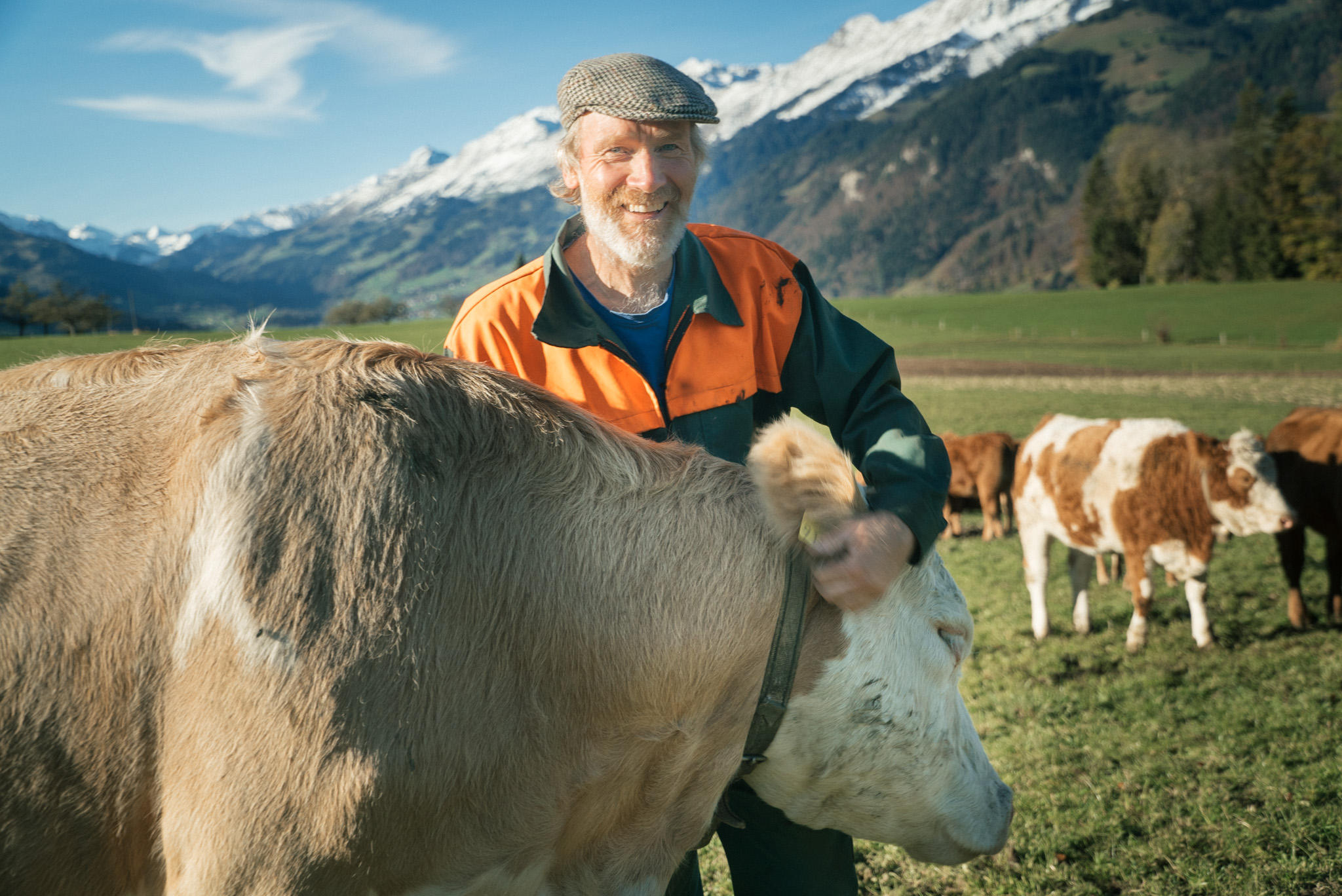
More
Kevin the organic beef farmer
All the small extras on the farm add up. Studies have found, for example, that farm machinery in Switzerland can cost 25% more than in neighbouring France and Germany and pesticides 70-75%.
But the explanations for the high prices are also structural and cultural.
Swiss agricultural policyExternal link, based on environmentally friendly and sustainable methods that guarantee national food supply, plays a role. The majority of farms meet minimum standards known as ‘required ecological services’ with production that encourages biodiversity, respectful animal-rearing, soil rotation, the use of natural fertilisers and other measures. In return, they receive subsidies worth CHF2.8 billion a year.
Swiss farms are typically small and traditional structures – average size of 18 hectares or around 20 cows – restricted by the alpine topography. Around 10% are organic. Meeting all the requirements to receive an organic food label places additional demands on certified farmers.
Fresh air cattle
Making sure farm animals are well looked after is a key factor. The biggest meat industry lobby group Pro Viande claims that ‘Switzerland has one of the strictest animal protection laws in the world’. It cites a 2010 comparative study of 12 European Union countries by the Swiss Animal Protection (SAP) societyExternal link, which put Switzerland head and shoulders above its neighbours for its respectful treatment of farm animals.
Beyond minimum animal welfare standards, farmers are encouraged – financially – to sign up to special federal schemes. In 2015, over three-quarters of Swiss farm animals took part in the so-called “Regular Time in the Open Air for Farm Animals” (RAUS) programmeExternal link and over half in the “Particularly Animal-Friendly Stable Systems” (BTS) Programme. Pro Viande says around 91% of Swiss chickens conform to the BTS standards, which offer raised places to sleep and access to protected areas outdoors at all times of the day. It claims that 81.2% of cattle regularly had time in the open air in 2015.
Feed is also closely controlled as is how livestock are transported: cattle eat mainly grass and hay, and much of the fodder for pork comes from by-products of human consumption, while animals cannot be on the road in a trailer longer than six hours, compared to 24 hours in the EU.
These strict environmental and animal welfare standards have a direct influence on the health of animals and quality of Swiss meat, say experts, but they also come at a price.
“We are much more expensive than our neighbours due to the salaries, but the quality of meat is different, and this is tied to how the animals are treated,” explains Elias Welti, head of communication at the Swiss Meat UnionExternal link, the leading butchers’ association.
Welti says the numerous Swiss regulations result in higher staffing and infrastructure costs. As one example, he cites directives setting out the amount of space that must be afforded each animal to move about, lie or feed. Swiss law, he argues, is much more animal friendly in this regard than other countries, and this too influences prices.
“Rules have to be respected and monitored – in contrast to other countries with regulations that only exist on paper,” Hagenbuch adds.
According to Pro Viande, each Swiss resident ate an average of 51kg of meat in 2016External link. Seventy per cent of Swiss people aged 15-70 eat meat at least 3-4 times a week (annual pork consumption per capita: 22.5kg; poultry: 12kg per capita; beef: 11kg per capita).
Meat consumption peaked in 1987, a year when the Swiss ate an average 71kg of meat per person. It declined in the 1990s and has stagnated over the past decade.
Pro Viande says the average purchase price for Swiss meat in 2016 (all types of meat including sausages, cold meats and tinned meat) amounted to CHF20.56/kg.
Blame the system
Barbara Pfenniger, a food specialist at the Federation of French-speaking Consumers (FRC)External link, agrees, even if she says the mandatory Swiss farm standards don’t differ greatly from neighbouring countries.
“Here we have a system of direct subsidies which encourages farmers to do more than the legal minimum.” In practice, a farmer is paid more if he gives his cattle time in the fresh air. Pfenniger says this should be seen as an investment in healthier livestock but it can also result in higher prices since producers can charge more for the meat from such animals.
But Pfenniger says regulations and incentives and how farmers’ implement and interpret them are not the only reasons Swiss meat is 142% more expensive than the global average.
If the largest Swiss supermarkets Coop and Migros like to blame high prices on high animal welfare and environmental standards, the consumer protection advocate says retailers often fix margins as a percentage of the product price, independently of any real added value.
Ali Ferjani, a scientist with the national agricultural research centre, AgroscopeExternal link, says another reason Swiss beef, for example, is even more expensive than Norway – second in the Caterwings table and a country with a similar standard of living – is “the different customs protection regime.”
Just over four-fifths of meat consumed in Switzerland is produced locally. The rest is imported and subject to high Swiss tariffs, the World Trade Organization (WTO) wrote in a report last May. The rates on imported agricultural products averaged 30.8% last year, while it was above 100% on some vegetables, meat, and dairy products.
Willing to pay more
When it comes to the high prices, Pfenniger says prices are adapted to what consumers would in theory be willing to pay. According to a 2016 survey, the Swiss are prepared to pay up to 27% more for local beef, chicken or pork than imported cuts of meat.
That may be because, according to a 2012 poll commissioned by Pro Viande, nearly nine out of ten people say they trust Swiss meat labels. In all, 64% felt Swiss-produced meat and ham was better quality than foreign meat.
“Consumers expect high quality from Swiss products,” she adds, maintaining that 80% of beef sold in Switzerland has been grown in Switzerland to higher standards. That, she says, is what farmers want and consumers demand.
Meat production
The production of meat in Switzerland rose by 0.7% in 2016, compared to the previous year to 348,057 tonnes, according to Pro Viande. Exports rose 10% to 8,375 tonnes and imports fell by 1.8% to 92,000 tonnes. Just over 80% of meat is produced locally.
In 2016, beef production increased by 2.8% to 78,351 tonnes, while pork production fell by 1.1% to 182,540 tonnes. Switzerland produced 58,100 tonnes of poultry meat, an increase of 4.5% compared to 2015. Compared to 2000, total meat production increased by 17.2%.
In 2016, there were 52,000 farms in Switzerland employing 153,000 people. The meat industry employed an additional 22,000 people (2014).

In compliance with the JTI standards
More: SWI swissinfo.ch certified by the Journalism Trust Initiative









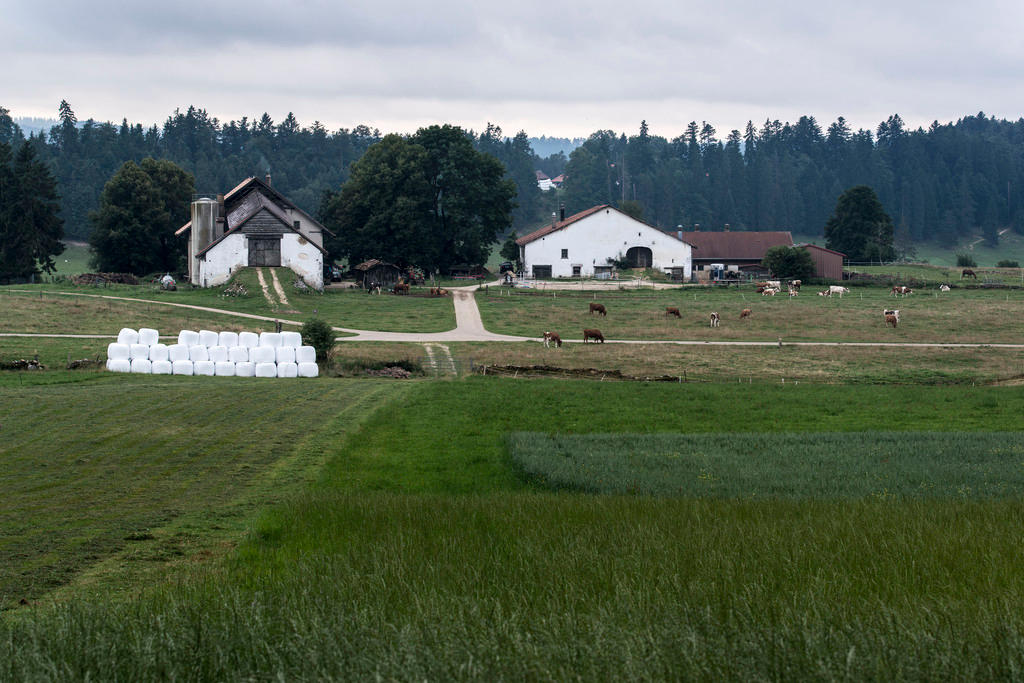
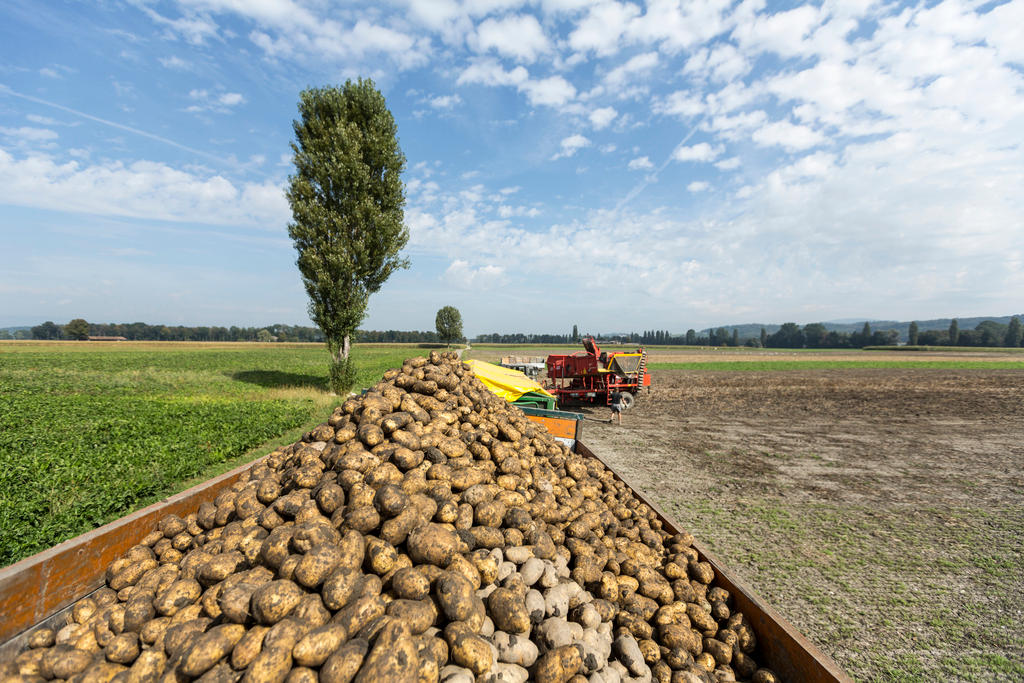
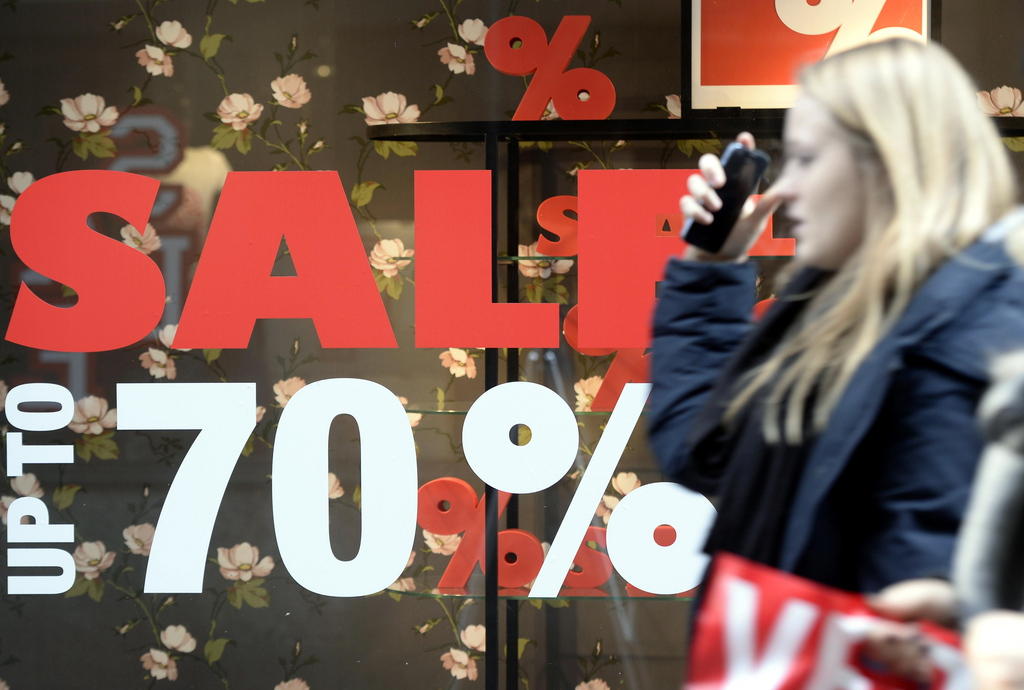

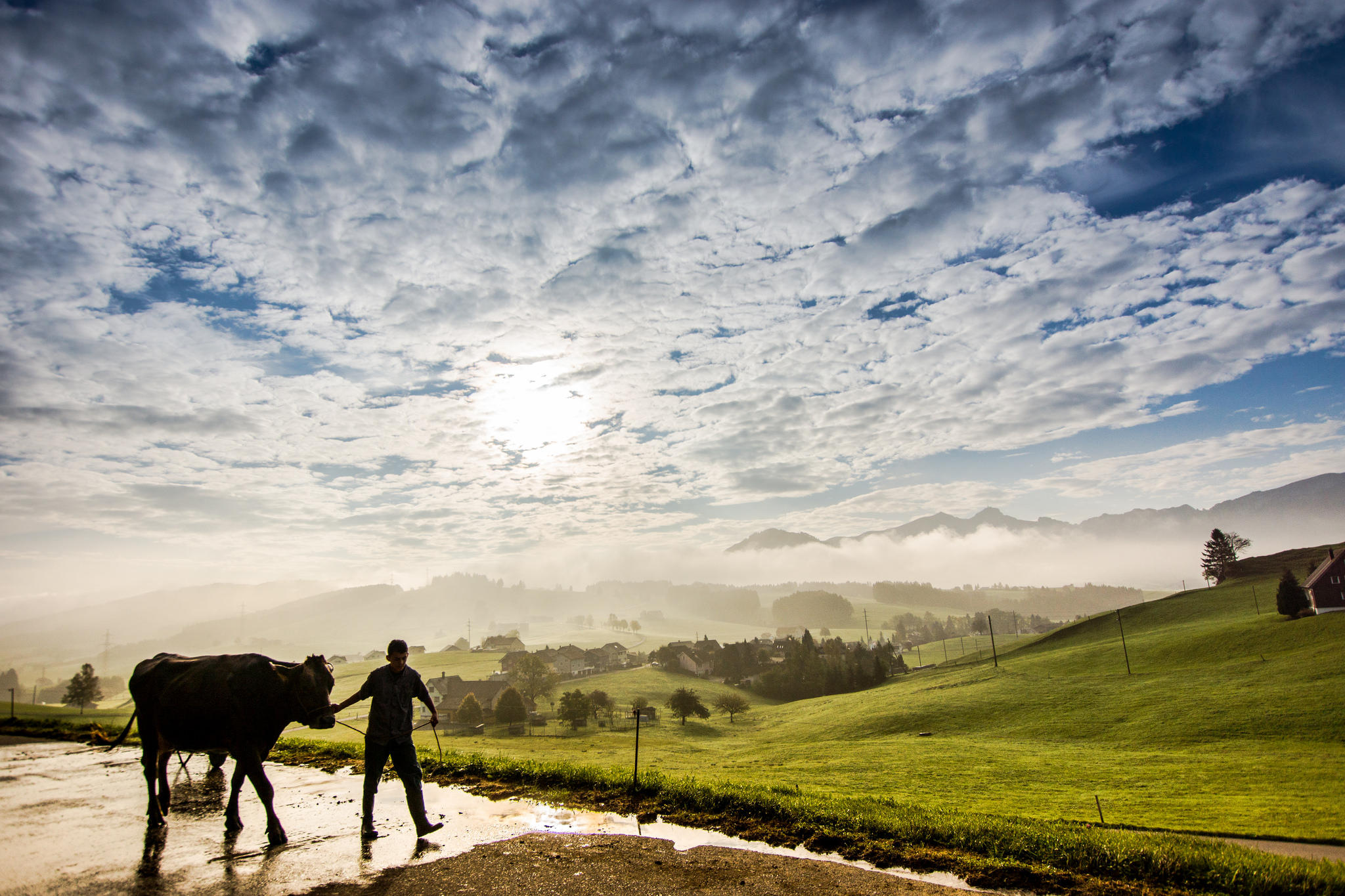

You can find an overview of ongoing debates with our journalists here . Please join us!
If you want to start a conversation about a topic raised in this article or want to report factual errors, email us at english@swissinfo.ch.